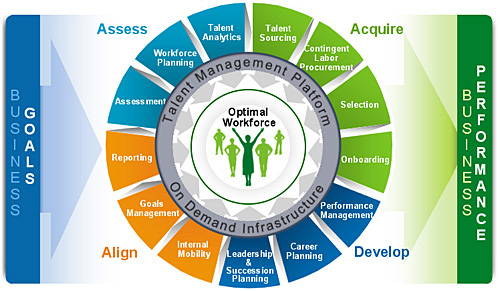Talent management is important for recruiting and integrating new employees, retaining current workers as well as attracting highly skilled employees to work in the organization.
In order to show positive ROI from human capital investments, HR must evolve beyond managing administrative requirements, including payroll, benefits, and sick leave, and become a strategic partner in business performance. The key challenge of HR is to identify the skill gaps and talent risks within the organization. Effective talent management allows HR to assess the organization’s recruiting, staff transfer, and succession planning needs, as well as analyze which skills and qualifications meet requirements for today and tomorrow’s performance.

Talent management helps set planning goals and create scorecard metrics for critical performance appraisal elements, including employee satisfaction index, succession and talent gaps, average experience and skill rating, average tenure, and retirements. For more efficient analysis, these goals and metrics can be based on a number of dimensions, such as skill type, full time / part time, job grade level, job type, and division / department.
Metrics and goals can be used to monitor the success of HR activities and to measure the current performance. Furthermore, these scorecard metrics help distinguish key elements driving employee performance management in the organization. Identifying succession gaps helps determine which skills are required for future job candidates, and create the training program to develop those skills in-house. Talent gaps allow HR to develop recruitment programs for attracting future employees. Average skill rating is important to see the availability of the right skills required to achieve the organization’s short-term and long-term business goals.